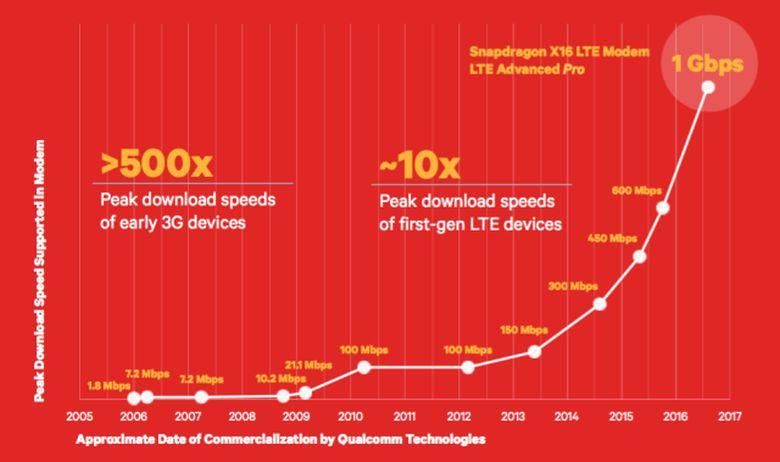Yesterday was a big day for a certain semiconductor company that saw its smartphone chip domination threatened last year through its own fault, but which seems to recover very well and quickly regain its industry trail-blazing reputation.
The high-end Snapdragon 820, mid-range SD625, 435 and 425, plus the wearable-designed Snapdragon Wear 2100 processors are however only the beginning of Qualcomm’s 2016 ushering of new mobile technology eras, with the Snapdragon X16 LTE modem also announced as an “important milestone” in network speed progress.
As the name suggests, the state-of-the-art modem aims to open the doors for LTE Category 16, a technology vastly improved from even the LTE 12 standard baked into the Snapdragon 820 SoC. SD820-powered devices should theoretically be capable of 600 and 150 Mbps peak download and upload speeds respectively, up from 450 and 50 for X10 LTE-equipped Snapdragon 810 systems.
Meanwhile, whatever future processor gets paired with this X16 LTE modem (the octa-core SD820 or perhaps the 830) will find its way inside mind-blowing phones technically suited to handle 1 Gbps downloads and 150 Mbps uploads. Why theoretically and technically? Well, because in real life, your browsing velocity zenith depends greatly on other factors too, starting with carrier infrastructure.
For its part, Qualcomm is definitely going the extra mile to make the impossible possible, delivering peak download speeds that are ten times as fast… on paper than those of first-generation 4G LTE devices. Gigabit Class LTE is obtained basically by using more antennas and “more-sophisticated digital signal processing” than before, aggregating only 60 MHz of spectrum on three carriers.
But the best news of all is smartphones containing Snapdragon X16 LTE modems are expected to land in stores as early as “the second half of 2016.” Did somebody say Galaxy Note 6? LG V11? Nexus 6P… Max?
Source: Snapdragon Blog

